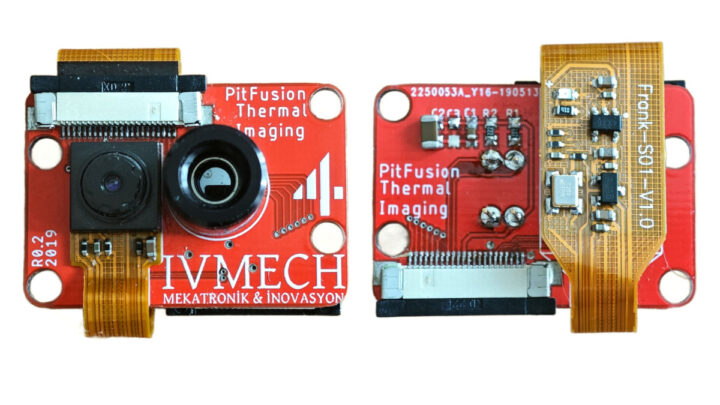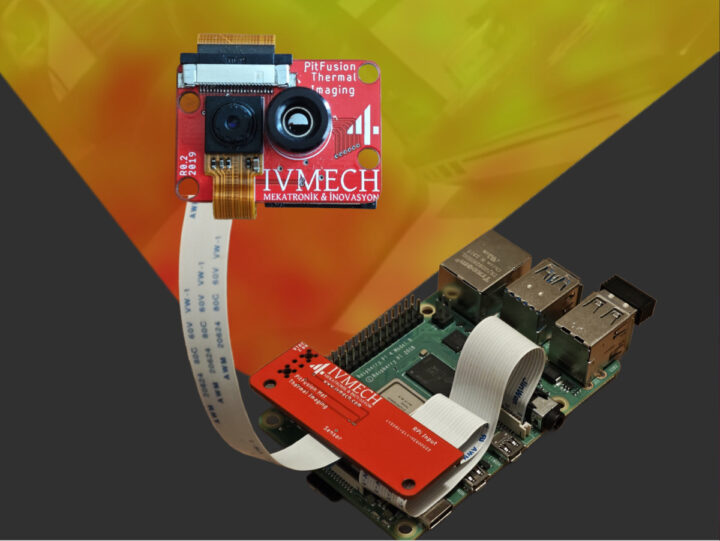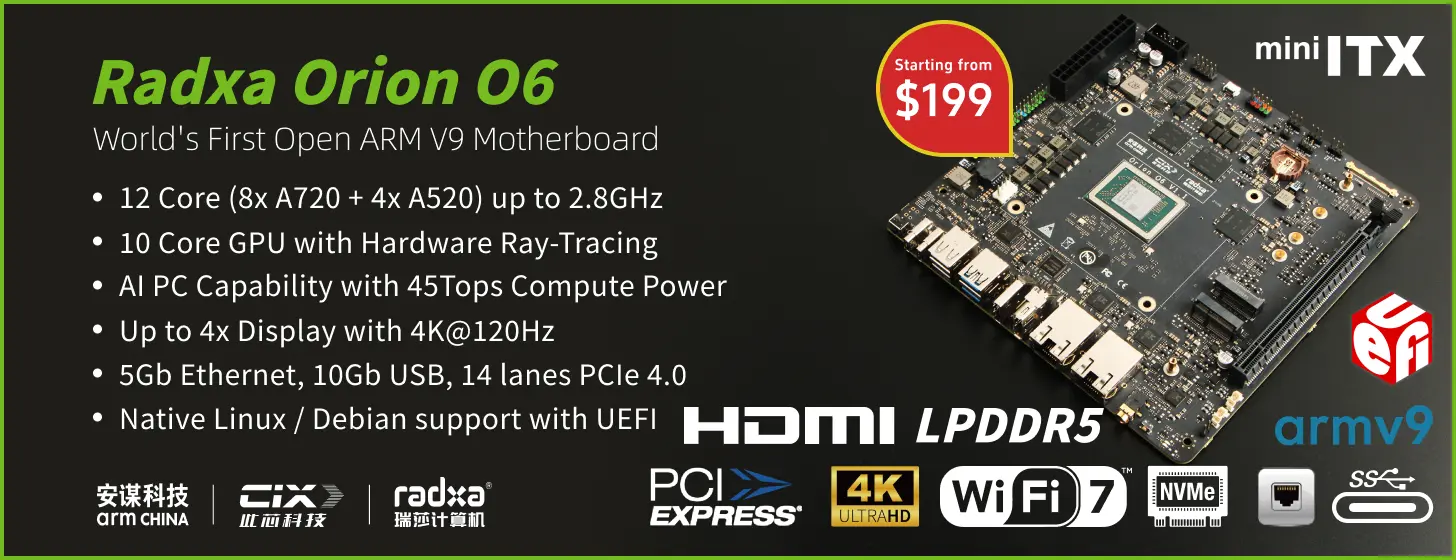IVMECH Mechatronics’ PitFusion is a thermal imager designed for the Raspberry Pi based on a Melexis MLX90640 32×24 thermal sensor and an Adafruit 0V5647 RGB sensor comparable to the Raspberry Pi Camera Module v1.3.
The kit enables users to capture thermal and visible images simultaneously, and can be useful for automation, robotics, security (human/pet motion detection), non-contact temperature measurement, and environmental monitoring applications.
PiFusion specifications:
- Thermal Sensor – Adafruit LX90640 with 32 x 24 pixel array
- Camera Sensor – Adafruit 0V5647 comparable to the RPi Camera Module v1.3 with 2592 x 1944 resolution
- Temperature Range – -40°C to 300°C
- Frame Rate – Up to 32 Hz (thermal), 30 fps (camera)
- Spectral Range – 8 µm to 14 µm (optimal for human body and object detection)
- Host Interfaces – I2C for thermal sensor, CSI for camera)
- Dimensions – 40 x 30 x 10 mm
- Weight – 15 grams
IVMECH says the thermal imager is compatible with the Raspberry Pi and supports Python programming, OpenCV, and custom APIs. You’ll find all resources on GitHub, including a Python script used to visualize thermal and RGB layers with adjustable transparency, instructions to use the module with Raspberry Pi OS, and soon, the hardware design files.
It’s not the first time we’ve noticed the low-resolution Melexis MLX90640 thermal sensor used in maker hardware, and the M5Stack Thermal Camera 2 Unit combines the sensor with an ESP32 wireless SoC. One advantage of the PitFusion is that it integrates thermal and RGB into a single module, a feature typically available on more expensive modules.
| PitFusion | Thermal Imaging Module | IR Thermal Camera | PureThermal 3 | Tracam Thermal | |
|---|---|---|---|---|---|
| Manufacturer | Ivmech Mechatronics | Waveshare | Adafruit | GroupGets | Lextar |
| Thermal Resolution | 32 x 24 | 80 x 62 | 32 x 24 | 160 x 120 | 324 x 256 |
| Thermal Frame Rate | Up to 32 Hz | Up to 25 Hz | Up to 32 Hz | Unknown | Unknown |
| Image Sensor | 5 MP | None | None | None | ~2 MP (estimated) |
| Thermal Overlay | Yes | No | No | No | No |
| Price | $140 | $89 | $75 | $383 | > $400 |
The PitFusion thermal imager for Raspberry Pi SBCs is now offered on Crowd Supply. A pledge of $140 is required for the PitFusion Standard Kit with the module, a Raspberry Pi HAT, and an FFC cable. Shipping adds $8 to the US, $18 to the rest of the world, and deliveries are scheduled to start in September 2025. It’s not quite the first Raspberry Pi camera from the company, as we previously wrote about the Ivport Stereo CM Breakout board for Raspberry Pi Compute Module for two cameras.

Jean-Luc started CNX Software in 2010 as a part-time endeavor, before quitting his job as a software engineering manager, and starting to write daily news, and reviews full time later in 2011.
Support CNX Software! Donate via cryptocurrencies, become a Patron on Patreon, or purchase goods on Amazon or Aliexpress







I stopped using this sensor because transfers were too slow. It’s only using I2C and supports up to 1 Mbps (my ESP32 didn’t). I remember that it supports 12 bits encoding of data, which should result in reading two bytes per pixel, and for a reason I don’t exactly remember I had to read the data twice (maybe first to charge then to collect). If we consider 9 bits for a byte (8+ACK), times 2 for the 12 bits (2 bytes), times 32×24, we end up with 13824 bits per image, times 32 FPS is 442kb, and times two for the two accesses=884kb. So maybe with a 1Mbps I2C it will just fit. If so that’s fine. But just in case, be prepared for something not exceptional (like in the video). 32×24 is just the minimum usable. I used it to detect a wasp nest in a wall, and to see hot chips on a board. The sensor is quite noisy IMHO but acceptable. Sometimes you definitely see a “column” effect on the screen, as if odd and even columns were not processed equally (note that there is a checkerboard transfer mode and I always wondered what problem it tried to address).
Ultimately I found some much higher resolution thermal cameras (240×192) for less than that. I bought a DMM which includes one and in the end it’s fine (and totally fluid). And once the resolution is high enough you don’t need the visible spectrum camera anymore because you can clearly recognize all shapes.